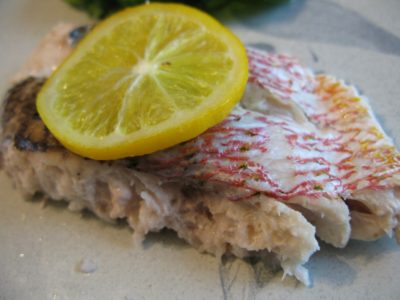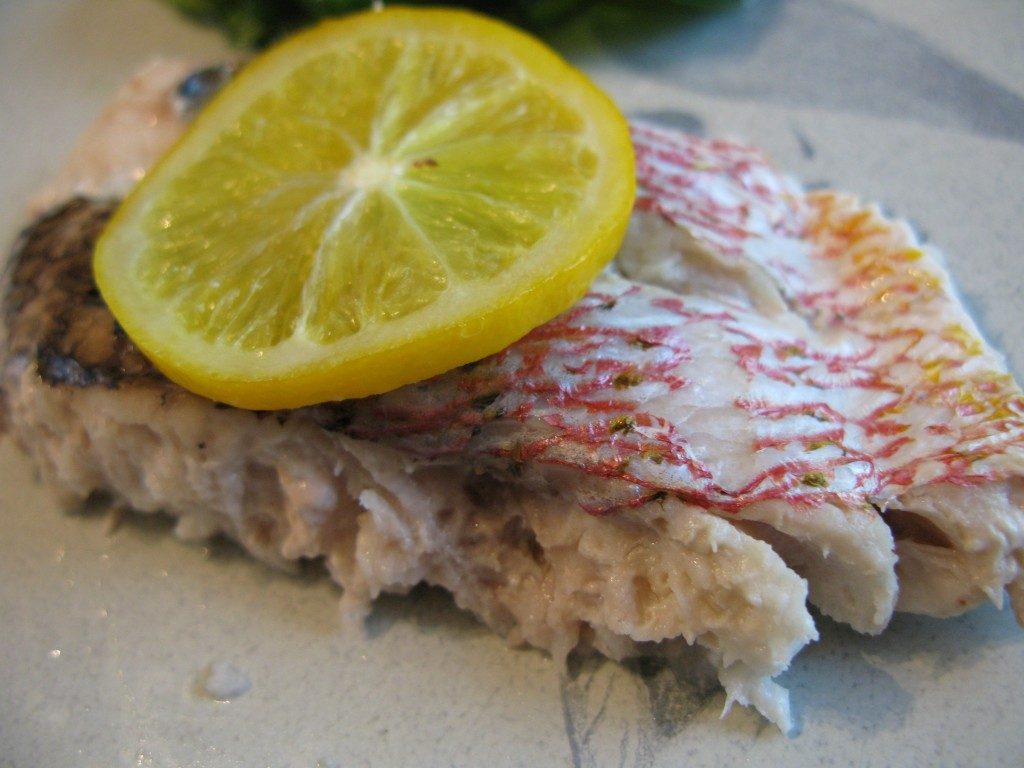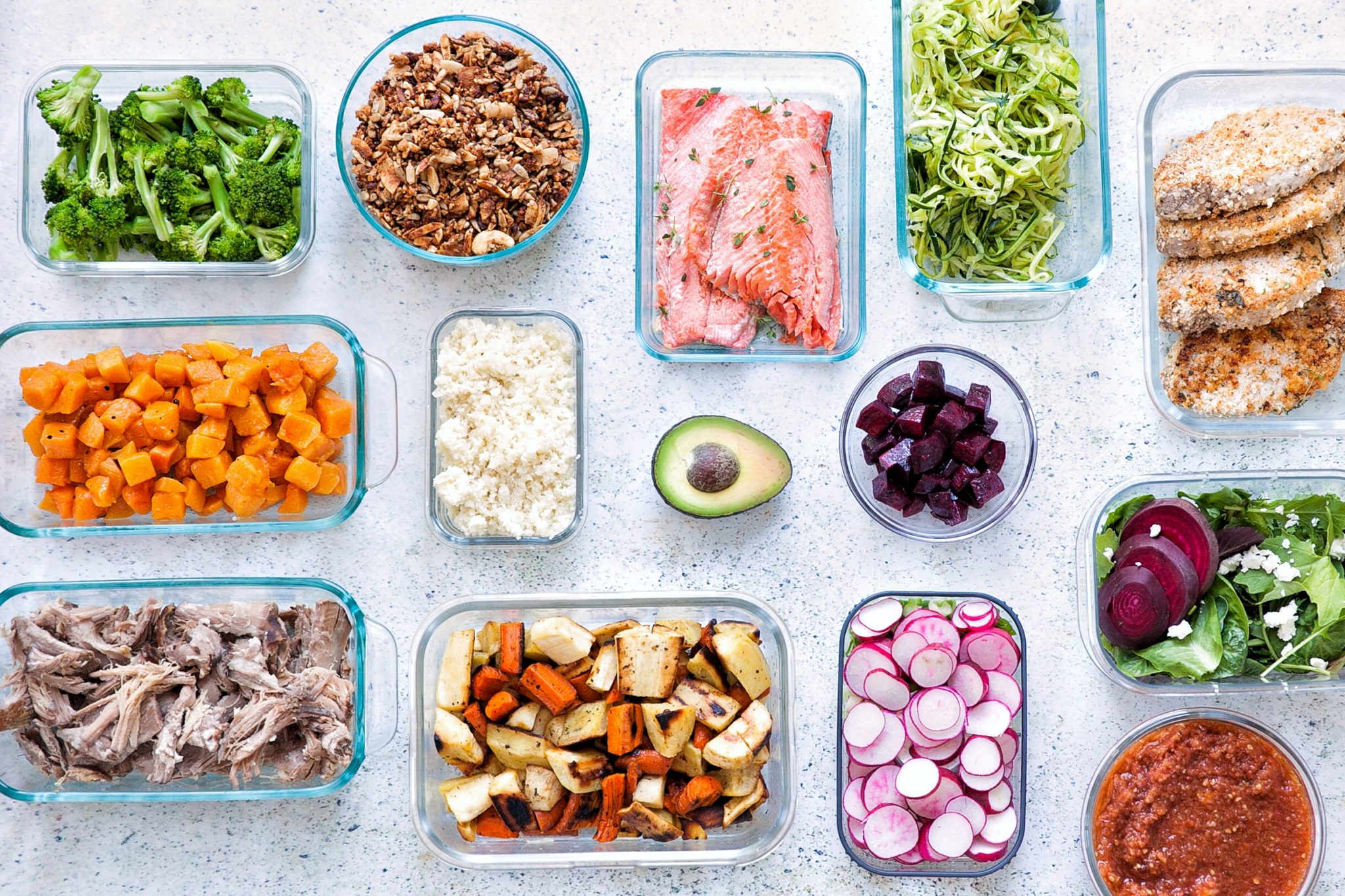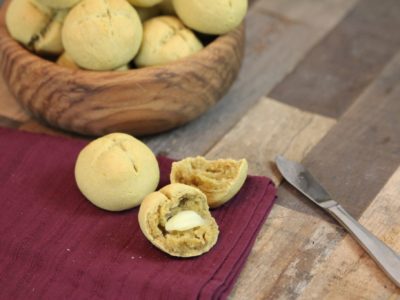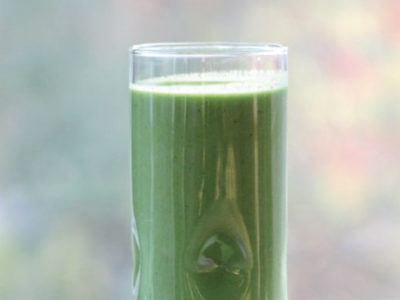I have very fond memories of fishing with my brother and my dad in this tiny little leaky row boat that my family owned when I was little. We lived on the Pacific Coast, so mainly what we caught was rock cod and the occasional mud shark (neither of which I remember enjoying eating). We were always excited to catch a red snapper (and even more excited when we lucked out and caught a salmon!), which has a lovely mild but distinct flavor (the snapper, I mean). So, when I can find fresh whole wild red snapper in the store (Costco has it sometimes), I often buy a few and throw them into my freezer. I love to buy whole fish. It is typically cheaper than buying fillets (again, you’re saving money by doing the work yourself), is very simple to prepare (this is one of my quick weekday meals), and I also get to save the heads and tails for making broth later. The fish that I bought were gutted but not scaled, which is fairly typical when buying whole fish. If you are uncomfortable scaling a fish yourself, you can ask your fish monger to do it for you (it’s not hard to do but I do tend to continue to find stray fish scales in my kitchen for days afterward).
This recipe would work for any whole fish, be it one you catch or one you buy. The seasoning is very simple and versatile. Sometimes I use regular lemons but I prefer to use Meyers lemons, which have a lovely flavor with a little less tang that works very well with snapper. If the fish is larger, I may use 1½ or even 2 lemons. I have also been known to substitute fresh thyme or tarragon for the parsley, depending on my mood. We can usually feed two adults and two small children with a 1½ pound whole fish. Actually, this is my 5-year old’s favorite meal.
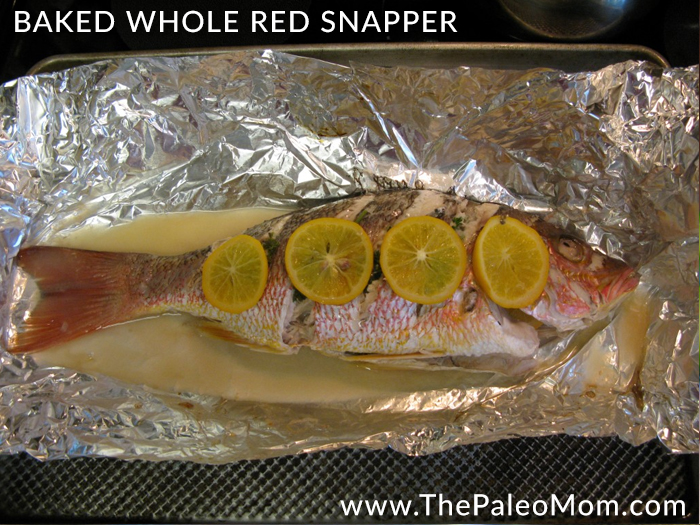
Ingredients:
- 1½ -2 pound whole red snapper, gutted
- 1 Meyers lemon, sliced into thin circles
- ¼ cup fresh parsley sprigs
1. Preheat oven to 375F.
2. Scale fish in the sink (preferable one with a disposal, otherwise you’ll want to line the sink with newsprint or something similar to make cleaning up the scales easier) by scraping a sharp knife (I like to use a slightly serrated knife) against the grain of the scales, i.e., from tail to head. The occasional scrape in the opposite direction can help loosen stubborn scales. Remember to do both sides. You can tell the fish is completely scaled when it has a very smooth texture when you rub it with your hand.
3. Lay the fish flat on a cutting board. Use a sharp knife (again, I like a little serration here) to cut through the skin and flesh down to the spine, 5 or 6 slices spaced about 1½ inches apart down the body from head to tail (slices are parallel to the gills, either straight up and down or slightly angled, up to you). Flip the fish over and repeat on the other side.
4. Stuff sprigs of parsley into the cuts you just made on the fish on both sides.
5. Place a sheet of tin foil about 2 ½ times longer than the fish on a rimmed baking sheet (if you have a large fish, you may want to use two sheets side by side, slightly over-lapping). Line up half of your slices of lemon on the sheet of tin foil and place your fish on top of them. Line up the rest of your lemon on top of the fish. Fold the tin foil over the fish and fold the end and sides over a couple of times to create a sealed envelope for the fish to bake in.
6. Bake for 20-25 minutes, until fish is opaque throughout and segments flake apart easily. To serve, use a metal spatula or cake knife to gently pry the meat way the spine. Once you have the top half of the fish served, you can either peel the spine off the bottom half or flip the fish over to access the other half of it.
7. Enjoy and watch for bones!

